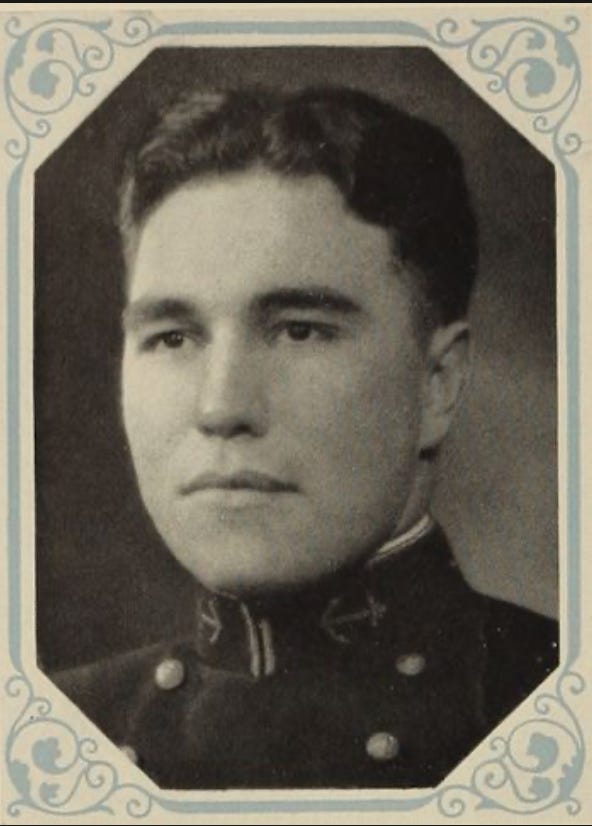When an Eagle Dared
On 25 October 1944, around 10:00 AM, Ernest Evans slipped his mortal coil - his body disappeared into the blackness of the Pacific Ocean. On that October morning, Commander Evans was the captain of a Fletcher-class destroyer named the USS Johnston. The Johnston was barely a year old when her hull, aflame, rolled over and slipped into the inky deeps of the Pacific. Evans and his ship ended life heroically saving countless lives on ship and shore.
Evans was an American Indian. A Cherokee/Creek and ¼ white born in Pawnee Oklahoma. He wanted to be a Marine Officer but a knee injury derailed his dream. Undeterred, he enlisted in the Navy. Undaunted in his desire to serve and lead, he won an appointment to Annapolis through a fleet competition. His fellow midshipmen nicknamed him “Big Chief”.
On October 25, 1944, Evans was commanding the USS Johnston off Samar, Philippines The Johnston along with 2 other destroyers and 4 slow destroyer escorts were shepherding 6 ‘escort carriers’ in support of US Marines on land. Escort carriers were carriers in name only. They were converted merchant ships. They were transports with flattops. And they were slow.
At 7:00 AM a Japanese armada of 4 Battleships, 6 heavy cruisers 2 light cruisers, and 11 destroyers appeared on the horizon. Evans knew what he faced, and it was certain death for all of his task force (Taffy 3) unless his group of fast but tiny destroyers could slow the Japanese down. Evans knew it was almost certainly a suicide mission. Evans ordered battle stations and the Johnston throttled up to flank speed and started to lay down a smoke screen to hide the retreat of the slow escort carriers. The escort carriers could manage about 18 knots - about half the speed of the faster Japanese warships. With the escort carriers in retreat, the Johnston went after the Japanese fleet. Like a wolverine attacking a much larger predator, the Johnston, along with the two other Fletcher-class destroyers attacked. The Japanese were forced to deal with the attack instead of concentrating solely on sinking the escort carriers. The Johnston launched torpedo after torpedo until its stores were exhausted. The Johnston fired 200 rounds sinking a heavy cruiser all while taking fatal damage. Evans was gravely wounded early in the fight, but the Johnston’s captain wasn’t going to give up. He stayed in the fight. When his bridge was destroyed Evans directed steering from an aft hatch shouting orders down to his crew.
By 9:30 AM, Evans and the Johnston were mortally wounded. Unable to fight anymore Evans ordered the crew to abandon ship. Commander Ernest Evans, USN went down with his ship.
Crewmen of the Johnston who had escaped from the dying hulk watched as the Japanese destroyer Yukikaze sailed passed the Johnston. The ship’s captain saluted the Johnston and presumably Johnston’s captain, Commander Evans.
Evans was posthumously awarded the Medal of Honor.
In 1955, the US Navy commissioned a Deleay-class Destroyer Escort after Ernest Evers (DE 1023). She was decommissioned in 1968. Currently, no Navy ship is named after Evers, but the Navy did find it appropriate to name a ship after Harvey Milk.


